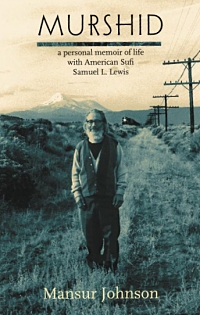| Cries for Attention: Nuggets of wisdom are buried in this difficult tome about American Sufi Samuel L. Lewis By PAUL WINE
In the midst of California’s eclectic spiritual counterculture, Lewis was a leader of some prominence (he was profiled in a 1969 Playboy article on California’s religious cults), and his story is indeed interesting. Lewis came from a well-to-do family (his father was an executive with the Levi Strauss and Co., his mother a Rothschild), and, from a young age, he appeared spiritually precocious. As he grew older, he demonstrated little material ambition and, consequently, became estranged from his family. He spent his life reading voraciously, writing, traveling, studying a broad range of religions with a number of teachers–including Hazrat Inayat Khan, a guiding force in the Western migration of Sufism–and working a variety of jobs from military intelligence to highway landscaping. In 1967, three years before his death, he had a vision in which he said God anointed him “spiritual leader of the hippies” and soon began teaching Sufi dances, breath work and philosophy to a growing number of young disciples. Johnson learned about Lewis while teaching at a Michigan university and seems to have experienced an immediate calling. He soon moved his family to California, becoming one of the murshid’s most devoted disciples. Living and traveling with Lewis, Johnson became his “esoteric secretary,” often transcribing the murshid’s enormous output of letters. A good third of the book is composed of Lewis’ correspondence, and these letters provide our clearest view of the murshid. Lewis was a driven communicator, writing to anyone–politicians However, Lewis’ constant theme was his anger and frustration over not being universally hailed as a spiritual teacher. He complains to everyone about being rejected and ignored, shouting to the rooftops about his spiritual eminence, often sending carbon copies to the offending parties. This overarching bombast raises a question that the book never satisfactorily answers: What exactly was Lewis’ allure? Johnson writes that, in his case, he wanted to find out what was behind the murshid’s braggadocio, and that he also had an almost childlike need for guidance. Johnson tells of his wholehearted quest for enlightenment, complicated by the painful breakup of his marriage after his wife’s affair with another murshid. Johnson gives glimmers of Lewis’ empathy and insight, and of some kind of mental attunement between them, but we’re hard pressed to pinpoint how the murshid actually helped him. What we get more than a glimmer of, though, is a kitchen midden of utterly useless minutiae, including shopping expeditions, house and auto repairs, meals, weather reports, trip routes, the murshid’s day-by-day itineraries and his endless pontifications. “My practice,” Johnson writes, “is … remembering what I do and recording it … to make it more real.” This material is all very real, but it would be far more accessible and compelling if Johnson’s journal had been turned into a tightly focused narrative with more about his inner struggles before meeting Lewis, the spiritual ramifications of his divorce and his reflections since the murshid’s death. Still, this is a worthwhile read for those willing to sift through the clutter for the occasional nuggets of wisdom and a taste of an authentic spiritual journey. Buy this book from Amazon.com! Murshid: A Personal Memoir of Life With American Sufi Samuel L. Lewis
|
Original URL: http://www.tucsonwe
enjoy!
~heather

